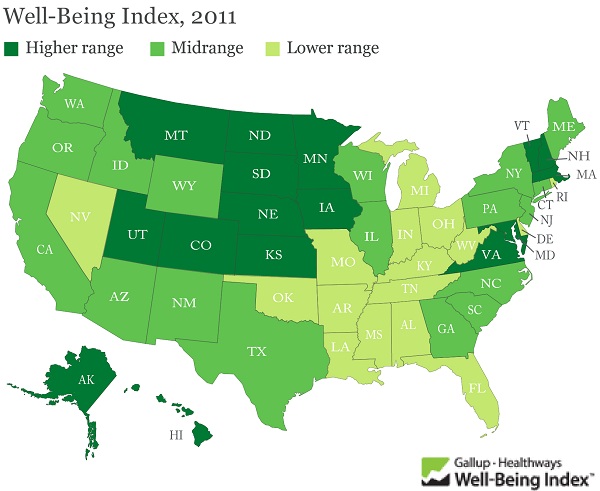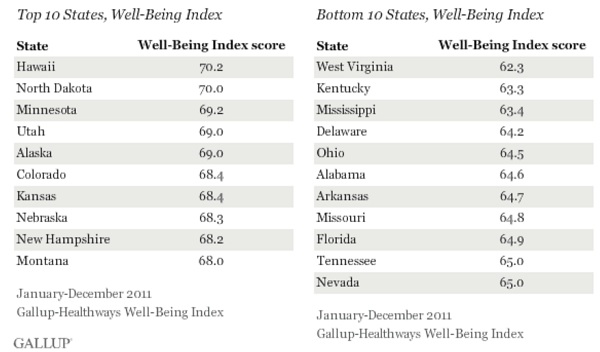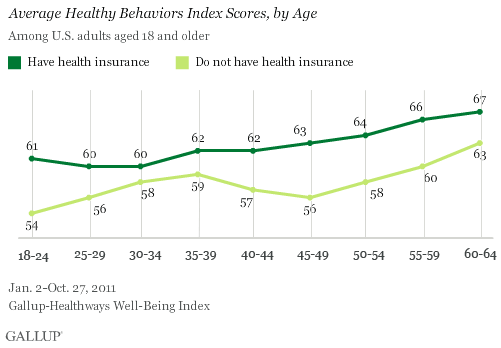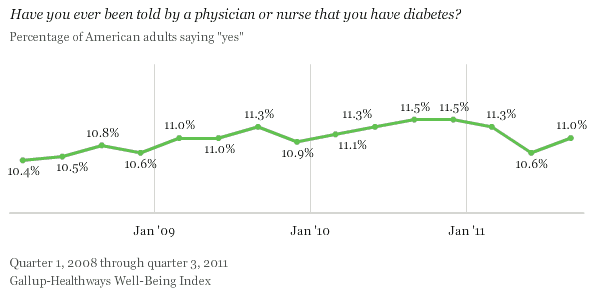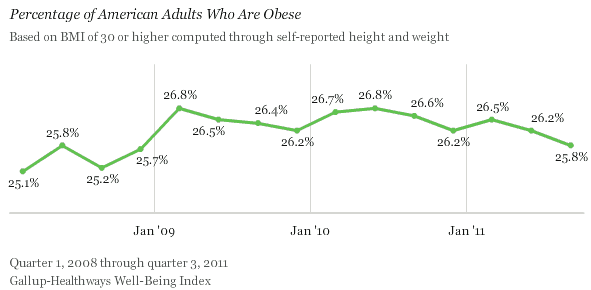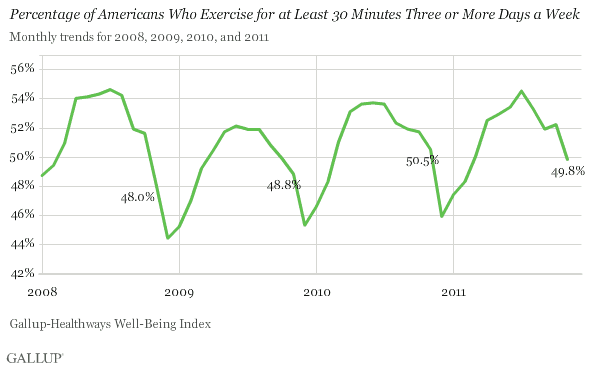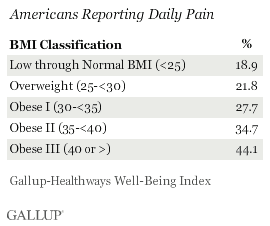
According to the latest Gallup Poll.
U.S. adults who are obese report higher rates of daily pain than those who are not, according to Gallup-Healthways Well-Being Index surveys of more than 1 million Americans. In fact, the higher an individual’s Body Mass Index (BMI) score, the more likely he or she is to report experiencing pain, with 44.1% of those with BMIs of 40 or higher saying so.
Gallup and Healthways calculate BMI scores based on respondents’ self-reports of their height and weight collected as part of the Gallup-Healthways Well-Being Index. Respondents answered questions about pain between 2008 and 2010, including if they experienced pain yesterday and if they had pain conditions in the last year.
Sixty-three percent of the 1,010,762 people who responded to the survey were classified as overweight (38%) or obese (25%). Obese respondents were further classified into one of three obesity levels as defined by the World Health Organization.
And, the link is stronger among women and older Americans.
Additionally, as Americans age, excess weight is associated with even more pain — especially for people aged 40 and older. This finding suggests a developmental process in which individuals who have chronic pain conditions, such as arthritis or other rheumatic diseases, may reduce their physical activity levels, which in turn leads to elevated BMIs. Alternately, older, normal-weight Americans were only slightly more likely than younger Americans to report daily pain.
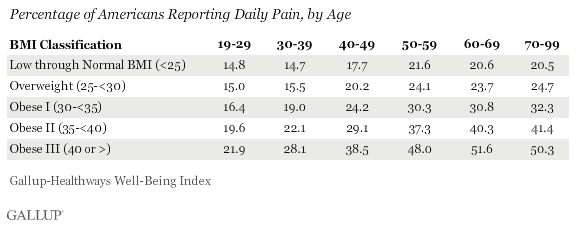
I am adverse to pain and am happily reducing my BMI.
Now, I weigh 228 and with my height of 5’11” will have to reach 214 pounds to shed myself of the obese category. I will then be overweight until I reduce to 185 or so.
It will probably be another year before I have reduced to a normal weight.
But, it is well worth it.
